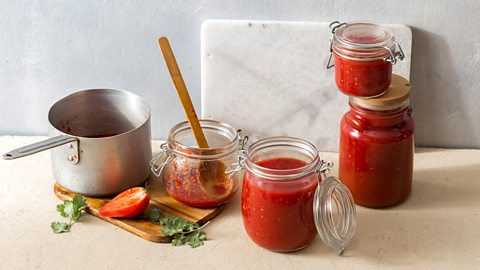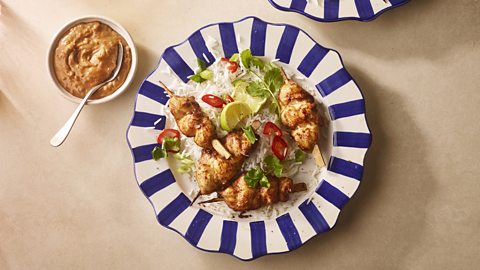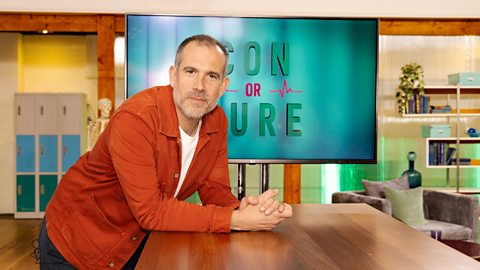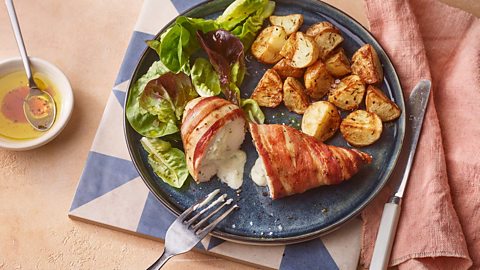What is omega-3 and am I getting enough of it?
We’re told omega-3 is vital for good health, but why? And what should we eat to get it?
By Jessica Bradley
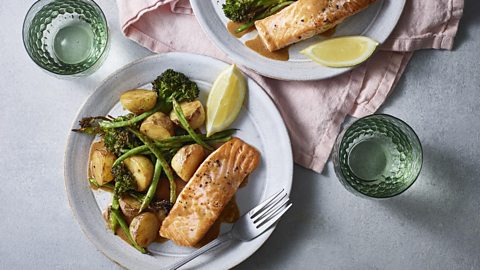
From packets of seeds to boxes of fish fingers, food packaging often contains claims about being a good source of omega-3. But while omega-3 is crucial for our health, there’s a lot of confusion around what it is, where it comes from and why it’s good for us. Here’s everything you need to know…
What is omega-3?
Omega-3 isn’t just one specific nutrient – it’s the name of a family of fatty acids. The three main omega-3s are ALA, DHA and EPA.
ALA is a short-chain fatty acid, while DHA and EPA are long-chain.
They are all referred to as an ‘essential’ nutrient, which means our bodies need them to function, but can’t make them from anything else. That’s why we need to get omega-3 from the foods we consume.
So, why are they essential? Omega-3 plays a big role in our health, including making hormones and building cell membranes which contributes to good health throughout the body.
Thankfully, omega-3s are found in many foods in our diet – but some are easier to find than others.
Microwave soy salmon noodles
Salmon is frequently touted as a great source of omega-3 and it can be quick to cook
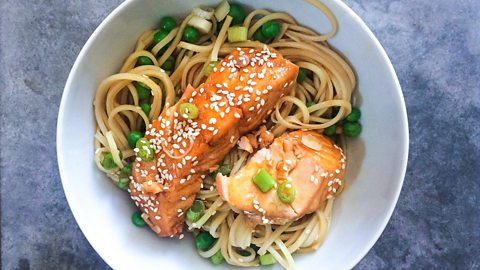
Which foods contain omega-3?
If you eat a varied, balanced diet, there’s a good chance you’re getting a good dose of omega-3. Oily fish is regarded as the best way to consume long-chain omega-3s DHA and EPA – in particular salmon, anchovies, mackerel and sardines.
Generally speaking, ALA is found in plant foods, while seafood provides us with DHA and EPA, which are commonly referred to as marine oils. But there is the exception of algae (usually consumed in the form of supplements), which is where fish gets its omega-3 content from in the first place. Kelp and seaweed also contain some DHA and EPA, though the levels are thought to be very low.
Plant-based sources of ALA omega-3
Green leafy vegetables Kale, spinach and Brussels sprouts
Plant oils Flaxseed and rapeseed (frequently found in vegetable oil)
Nuts and seeds Flaxseed, chia seeds, walnuts
Animal-based sources of EPA and DHA omega-3
Are we getting enough omega-3?
While there are no official guidelines on how much ALA, EPA and DHA you should have in your diet, the NHS recommends people consume at least two 140g portions of fish a week, including one portion of oily fish, to ensure they’re getting enough EPA and DHA.
But only around 6% of children eat the recommended two portions of fish per week, including one oily fish and only 55% of adults are said to have one or more portions of oily fish a week.
But even if you are eating the recommended amount, it’s becoming more difficult to get enough EPA and DHA from fish, says Johnathan Napier, science director at Rothamsted Research. This is because most of the fish available in supermarkets comes from fish farms.
“Around one million tonnes of fish oil is taken out of the ocean globally every year, but this is spread around thinner and thinner as populations increase,” Napier says.
And around 80% of this one million tonnes is used to feed fish in fish farms, because, like us, they have a limited capacity to make EPA and DHA themselves, he says.
In the ocean, on the other hand, fish consume omega-3 from the microalgae they eat (which is why algae supplements are an option for those who follow a plant-based diet). This omega-3 accumulates as smaller fish are eaten by bigger fish, all the way through the food chain, Napier says.
While fish farming is an expanding industry, there’s a finite amount of fish oil available to spread around. This means the amount of fish oil being fed to fish is declining significantly, so we need to eat more fish than ever before to get the same amount of omega-3 in our diets, Napier says.
The amount of EPA and DHA in a salmon steak, for example, is around half what it was 10 years ago, he says.
While fish is the main source of EPA and DHA, Genevieve Buckland, senior research associate at the University of Bristol explains our bodies can convert ALA – found in vegetables, nuts and seeds – into DHA and EPA, but the conversion rate is very low.
“The conversion rate is somewhere about 4-8% from nuts and leafy vegetables, so it’s much better to get this from oily fish,” she says.
This tea-time mackerel is basically a posh cheese on toast says Nigel Slater
Omega-3’s health benefits
Eating a diet rich in omega-3 (ALA, EPA and DHA) has been linked to numerous health benefits, including for our liver, heart and brain.
One review of studies found people with higher intakes of omega-3 and/or fish had much less risk of developing age-related degeneration of the eyes, while another analysed 33 studies and found that eating more omega-3 may help protect brain functions such as concentration and memory and reduce the risk of developing Alzheimer’s disease.
Nigella’s breakfast bars come with both flaxseed and chia seed which are a great plant-based option for omega-3
Getting enough omega-3 – particularly EPA and DHA – is also linked to lower blood pressure and overall better heart health.
Omega-3 has also been linked to mental health. In one study, researchers linked eating moderate amounts of fish and omega-3 with a reduced risk of depression.
However, researchers have found that while the heart health benefits of ALA may be comparable to EPA and DHA, there isn’t yet enough evidence to say this is definitely the case.
There’s a robust evidence base showing links between omega-3 and/or fish intake and many aspects of our health, but these findings mostly show health benefits of omega-3 from the marine oils DHA and EPA.
“Omega-3 from marine oils is important for our cardiovascular health, brain function, mental health”, Napier says.
What about mercury levels in fish?
Despite omega-3’s many links to health, there are concerns that ingesting mercury through fish can increase the risk of developing cancer and heart disease.
The main concern around fish and pollutants is the neurotoxin mercury, which research suggests can pass through a mother’s placenta and affect their baby’s development. But a review of studies says there isn’t enough evidence proving that this is the case.
While the NHS recommends that pregnant people don’t eat more than two portions of oily fish a week and avoids fish including swordfish, sark, marlin, cold smoked salmon and raw shellfish), it doesn’t have any such recommendations for the general public.
But as the oceans become more polluted, getting omega-3 from fish may become more harmful to our health. Evidence suggests that levels of mercury found in the ocean may rise as the planet warms, as melting Arctic permafrost releases trapped mercury into the environment.
Should I be worried about omega-6?
To make things more confusing, our omega-3 intake is also linked with omega-6 fats, which are mostly found in vegetable oils including sunflower and rapeseed oils. This is because there has been a focus in recent years on maintaining the right balance of omega-3 and 6.
Omega-6 helps to lower bad cholesterol and boost good cholesterol, but there's one problem; the body also converts omega-6 into arachidonic acid, which can cause inflammation, which is linked to many health problems, including heart disease. However, arachidonic acid can also be converted into molecules that help to lower inflammation.
“Research shows we evolved with a diet containing a ratio of omega-6 to omega-3 of around one, whereas now, this ratio is more like 15/1 to 16.7/1 in the west,” says Buckland.
Having a high omega 6/omega-3 ratio can increase the risk of heart disease, cancer and inflammatory and autoimmune diseases, whereas having more omega-3 and less omega 6 in your diet can lower these risks, researchers say.
Another reason there has been concern around our omega-6 intake is because it’s found in – and therefore associated with – many processed foods, including biscuits and cakes.
Looking to increase your omega-3 intake? Try these recipes
- Salmon traybake
- Roasted aubergine with walnut salsa
- Sweet vegetable, sardine and bean stew
- Kale, pea and ricotta frittata
- Mango lassi chia pudding
- Mackerel in pizzaiola sauce
Originally published June 2024
